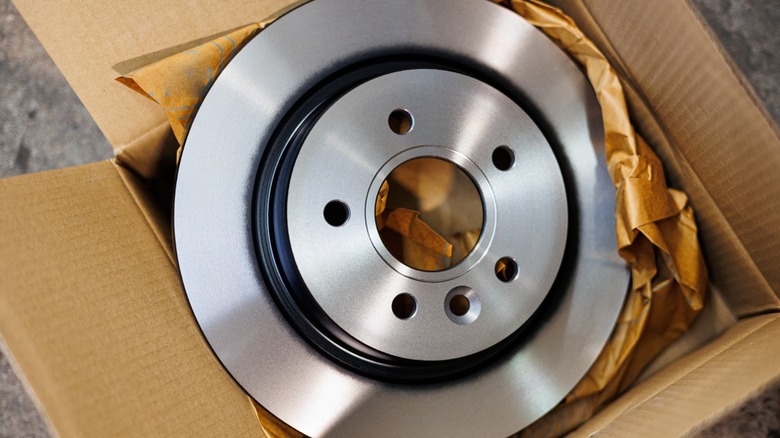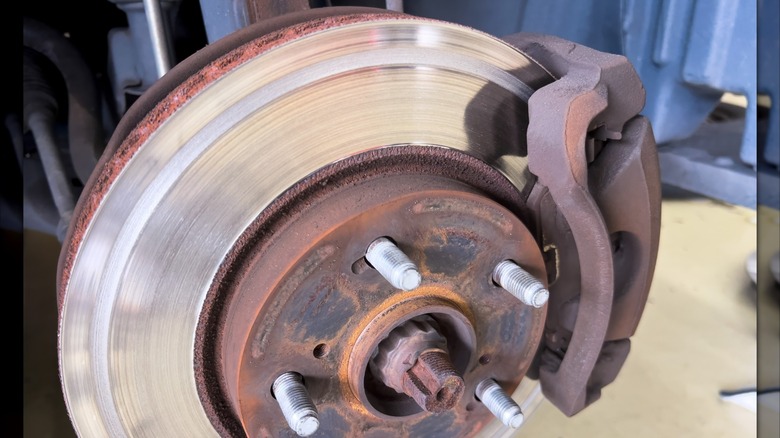What Is Brake Rotor Resurfacing And Is It Safe To Do?
Brake rotors are an important part of an automobile's disc brake system. They attach to and spin at the same speed as the car's wheels while providing a surface for the brake pads to grip when the brakes are applied to slow or stop the car. While many newer cars have disc brake rotors on the front wheels with drum brakes on the rear, a growing number have four-wheel disc brake systems.
What makes disc brakes unique, and gives them their name, is the brake rotor's disc-like shape. It's this outer disc surface that the brake pads grip whenever the brakes are applied. The friction between brake pads and the disc brake rotor slows the vehicle, causes wear to the pads and rotor, and generates a substantial amount of heat. Sometimes, the brake rotor can wear unevenly, debris or faulty brake pads can score the rotor, and heat can cause the rotor surface to be uneven. Brake rotor resurfacing can potentially be used to refurbish rotors with any of these conditions, along with others, in some cases.
Resurfacing brake rotors requires cutting enough metal from the rotor to remove the bad conditions. This is done by a trained technician using a specialized machine called a brake lathe. Resurfacing brake rotors is not a DIY project that can be accomplished without a lathe, the requisite skill to operate it, and the precision measuring tools required to verify the manufacturers' specifications are maintained.
Is it better to resurface old brake rotors or buy new ones?
The most important aspect to consider when deciding between buying new brake rotors and resurfacing the ones on your car, is the automaker's recommendation. While many automobiles use brake rotors that can be resurfaced at least once, and often several times, resurfaced rotors must maintain the minimum thickness specified by the automaker. In addition, some automakers may not allow resurfacing brake rotors at all.
If resurfacing your brake rotors is an option, you'll want to have the work performed by a reputable company. If you're comfortable changing the brake pads on your vehicle, removing the rotors is a relatively simple next step. You could also use digital or dial calipers or a micrometer to measure your rotors to determine if they are thick enough to even consider resurfacing based on the minimum thickness stamped on the rotor or published in the vehicle's service manual.
Some brake rotors are inexpensive enough to make buying new ones an attractive option compared to the cost of resurfacing. However, the price of new brake rotors is typically considerably higher than the cost of resurfacing your old set. While the mileage interval for changing or resurfacing your car's brake rotors depends on the materials used in its braking system, it's a good idea to have the brake system checked regularly, or immediately if there's a problem, and to follow any maintenance recommendations found in your owners' manual.

